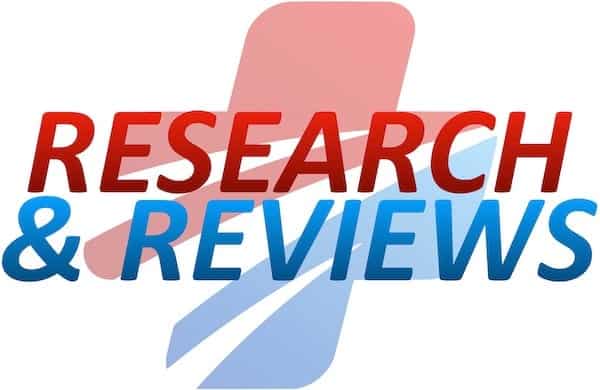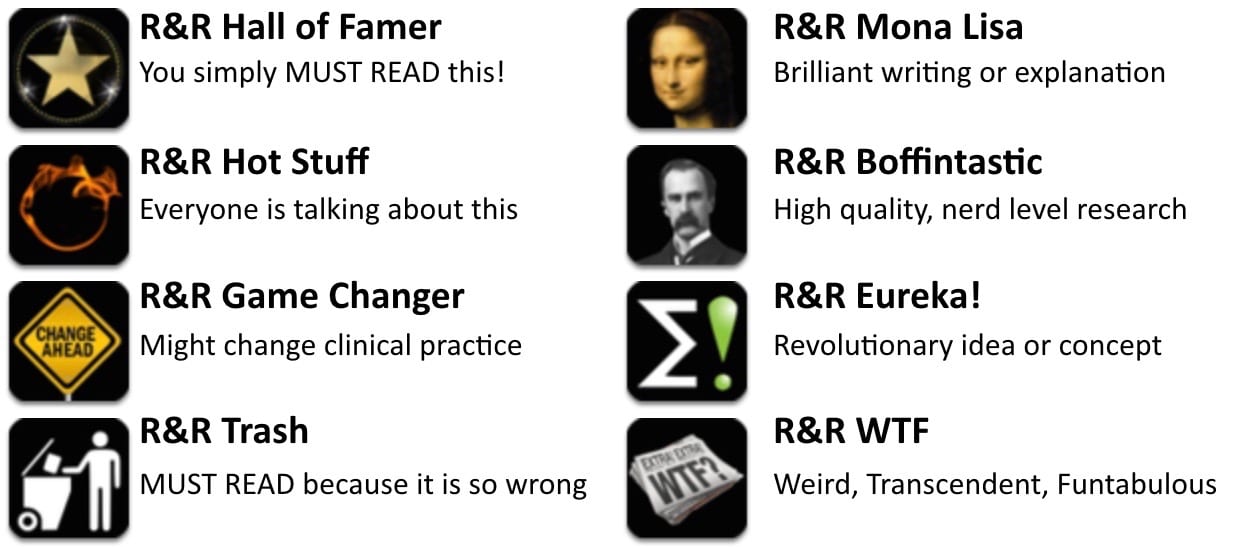R&R In The FASTLANE 136
Welcome to the 136th edition of Research and Reviews in the Fastlane. R&R in the Fastlane is a free resource that harnesses the power of social media to allow some of the best and brightest emergency medicine and critical care clinicians from all over the world tell us what they think is worth reading from the published literature.
This edition contains 6 recommended reads. The R&R Editorial Team includes Jeremy Fried, Nudrat Rashid, Soren Rudolph, Anand Swaminathan and, of course, Chris Nickson. Find more R&R in the Fastlane reviews in the : Overview; Archives and Contributors
This Edition’s R&R Hall of Famer
Gaudry S, et al. Initiation Strategies for Renal-Replacement Therapy in the Intensive Care Unit. New England Journal of Medicine. 2016 PMID: 25902813
- The Artificial Kidney Initiation in Kidney Injury (AKIKI) trial was an unblinded, prospective, multicentre, open-label, two-group randomized study conducted in France. 620 patients with severe acute kidney injury defined as KDIGO stage 3 (Kidney Disease: Improving Global Outcomes classification, who required mechanical ventilation, catecholamine infusion, or both and did not have a potentially life-threatening complication directly related to renal failure were randomized to either either an early or a delayed strategy of renal-replacement therapy. Mortality at day 60 (primary outcome) did not vary between intervention groups however, the rate of catheter-related bloodstream infections was higher in the early-strategy group than in the delayed-strategy group (10% vs. 5%, P=0.03) and diuresis as a marker of improved kidney function, occurred earlier in the delayed-strategy group.
- Recommended by: Nudrat Rashid
- Read More: Mehta. Renal-Replacement Therapy in the Critically Ill — Does Timing Matter? New England Journal of Medicine. May 15, 2016. PMID: 27181293
Bonadio W, et al. Meta-analysis to Determine Risk for Serious Bacterial Infection in Febrile Outpatient Neonates With RSV Infection. Pediatr Emerg Care. 2016. PMID: 27139289
- The issue if it is necessary to pursue a complete septic workup in kids at risk for serious bacterial infections (SBI) and simultaneous viral syndrome with positive test for RSV has been going around for some time now. For older kids, the risk of an SBI in presence of a positive RSV test is about 5-10% (7%). This papers is a meta-analsysis for the risk of SBI in neonates (<28 days) in patients presenting to their center plus a pool data from a larger study. The methodology is somewhat obtuse, but pooling data, they found the risk of SBI in neonates with +RSV is about 10.5% and 15.3% in those with -RSV; the difference is not statistically significant. The authors conclude that the presence of +RSV is not a good indicator of the absence of SBI. Bottomline, similar to older kids, we should probably keep doing a full workup in febrile neonates with a bronchiolitis syndrome and at the same time, I wait anxiously for the PECARN SBI rule.
- Recommended by: Daniel Cabrera
Wasserman JK, et al. Isolated transient aphasia at emergency presentation is associated with a high rate of cardioembolic embolism. CJEM. 2015. PMID: 25782453
- In this prospective cohort of TIA patients, they found that having isolated aphasia at presentation was associated with double the rate of a cardioembolic etiology of stroke. Although this is strong, believable data, I disagree with the conclusion that “emergency patients with isolated aphasia with a TIA warrant a rapid and thorough assessment for a cardioembolic source”. Non-aphasic patients still had an 11% chance of a cardiac source as compared to 22% with aphasia. Those two numbers clearly necessitate the exact same work up. This is interesting, but I think clinically irrelevant data.
- Recommended by: Justin Morgenstern
Grunau BE, et al. Emergency Department Corticosteroid Use for Allergy or Anaphylaxis Is Not Associated With Decreased Relapses. Ann Emerg Med. 2015. PMID: 25820033
- Big observational study looking at 2700 allergic reactions (nearly 500 with anaphylaxis). Nearly half (only half?) got steroid bursts, with no difference in outcomes. Notably there were no deaths, only a handful of biphasic reactions, and single-digit ED revisits in both groups; and, of course, this is only an observational study. Won’t change my practice (is there much harm in 3 days of prednisone?) but certainly makes me think.
- Recommended by: Seth Trueger
Joshi R, et al. Optimizing oxygen delivery in the critically ill: the utility of lactate and central venous oxygen saturation (ScvO2) as a roadmap of resuscitation in shock. J Emerg Med. 2014. PMID: 25124137
- Excellent paper highlighting resuscitation of both the O2 delivery and cellular metabolism and then providing a stepwise approach on how to evaluate the two specific endpoints: ScvO2 levels and lactate production.
- Recommended by: Soren Rudolph
Green SM, Schriger DL. The Sinking STONE: What a Failed Validation Can Teach Us About Clinical Decision Rules. Ann Emerg Med 2016. PMID: 26803703
- We see multiple decision instruments trotted out only to be thwarted during validation studies. The STONE score is another such instrument. This editorial discusses the lessons we can learn from failed validation of studies and is an excellent guide to use when considering any clinical decision instrument.
- Recommended by: Anand Swaminathan
Intensivist and Donation Medical Specialist, Australia | @NudratRashid |








